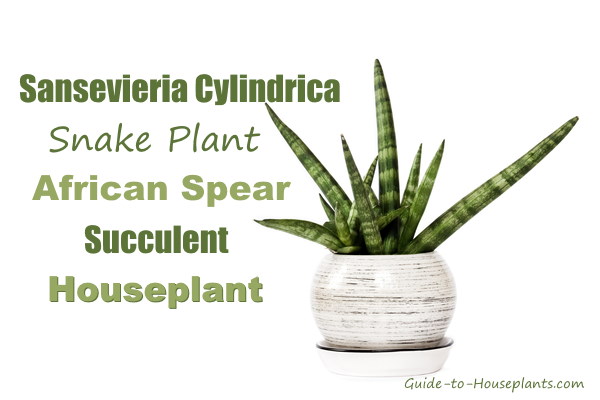Cylindrical Snake Plant – Sansevieria cylindrica Care Tips
Botanical Name: Sansevieria cylindrica
Cylindrical Snake Plant is an African succulent that makes a carefree house plant.
Round leaves with a dark-green striped pattern give this eye-catching succulent its common name. Pointed leaf tips give it another name, African Spear. (Watch out for those points — they are sharp!) The gray-green tubular leaves grow in a rosette and are about an inch thick. Wipe leaves with a damp cloth to keep them dust-free.

Long, creamy white flower spikes may appear on mature plants. If you’re lucky enough to get the blooms, you’ll love their beautiful fragrance.
This relative of Mother-in-Law’s Tongue is just as easy to grow, but has a fresh, bold style all its own. You’ll enjoy this striking accent among your indoor plant collection. Its easy-going nature and tolerance of dry air and soil also make it a reliable office plant.
Any problems with growing Sansevieria are usually related to watering. Allow the soil to dry out between waterings. If in doubt, keep it on the dry side. The only things that will kill this plant is soggy soil and prolonged exposure to cold temperatures.
Repot in spring, only when plants get crowded and need dividing. Keep the rosette of the leaves at soil level. Use a wide, heavy container to prevent toppling — this tall plant can get top-heavy.
Sansevieria Cylindrica Snake Plant Care Tips
Origin: South Africa
Height: Up to 2 ft (60 cm)
Light: Bright light to full sun. If you move Sansevieria cylindrica outdoors for the summer, don’t worry — it can take the heat. But make the move into direct sunlight a gradual one to avoid scorching its leaves. Scorch marks look like gray or brown patches.
Water: Water thoroughly, then allow the potting mix to dry out before watering again. Don’t water the center of the rosette because the leaves will easily rot. Water the soil, taking care not to get water on the leaves, which will cause them to rot. If the leaves turn yellow, or get soft and mushy at their base, the plant is overwatered.
Humidity: Average room (about 40% relative humidity) or lower. Snake Plants will tolerate dry air, but keep it away from air vents or drafts.
Temperature: Average to warm room temperatures 65-75°F/18-24°C. It will tolerate fluctuating temperatures, but not below 55°F/13°C.
Soil: Cactus potting mix works best because it is fast-draining. This succulent will not tolerate soggy potting medium.
Fertilizer: Feed monthly spring through fall with fertilizer specially made for succulent plants, mixed at half the recommended strength. Don’t feed in winter, when growth is slower.
Propagation: Division. Propagate Snake Plant by separating the “pups” (offsets) that grow at the base of the parent plant. Dividing them is easy. Turn the pot on its side, then ease out the plant. Use a serrated knife to cut off the offsets and pot them up individually.




